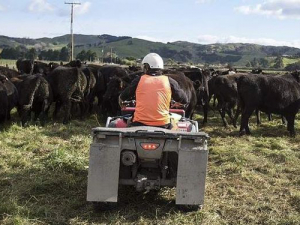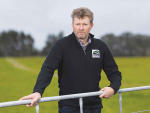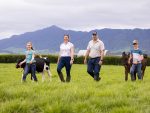WorkSafe New Zealand has clarified the circumstances in which it is acceptable to carry passengers on single-seat quad bikes, in consultation with Federated Farmers, Beef + Lamb NZ, and DairyNZ.
Under the Health and Safety at Work Act (HSWA) 2015, persons conducting a business or undertaking such as farming must identify and manage risks arising from work, so far as is reasonably practicable.
WorkSafe’s position on quad bikes is that single-seat quad bikes should not normally be used to carry passengers. Carrying a passenger on a quad bike that is not designed for more than one person can increase the risk of accidents by making it more unstable, more difficult to control, and more likely to rollover.
“WorkSafe’s guidance is that you should use the safest vehicle for the job. When carrying a passenger this would mean using a vehicle specifically designed for more than one person,” said Al McCone, WorkSafe sector lead - agriculture.
WorkSafe acknowledges that farmers and others using quad bikes for work need the policy clarified so they clearly understand what is acceptable to WorkSafe in terms of carrying passengers. It is only acceptable when there is no reasonable alternative having considered factors such as availability of alternative vehicles, terrain, and rider and passenger capability.
In those cases where a passenger is taken, appropriate mitigation measures must be taken – including limiting speed, briefing the passenger on best practice riding, and avoid unsuitable terrain.
If carrying a passenger on a quad bike is a recurring necessary practice, you should be seriously looking at acquiring an alternative vehicle suitable for the circumstances as soon as is practicable.
The clarification also stipulates that carrying a child as a passenger on a quad bike creates a particular set of risks that you need to consider. As with the general principle, you may only carry a child as a passenger if there is no reasonable alternative and following an assessment of the related risk and risk mitigation measures.
“This is a good example of WorkSafe and farmers working together to find practical solutions. We all want less accidents and injuries on our farms, so the important thing is that we always consider risk and this guidance emphasises that,” said Sam McIvor, CEO Beef + Lamb New Zealand.
“It’s great to have this clarification on an issue that has been confusing for farmers. It also encourages farmers to think about the risk their activities create and to manage their work in line with that risk,” said Katie Milne, Federated Farmers board spokesperson for health and safety.



















